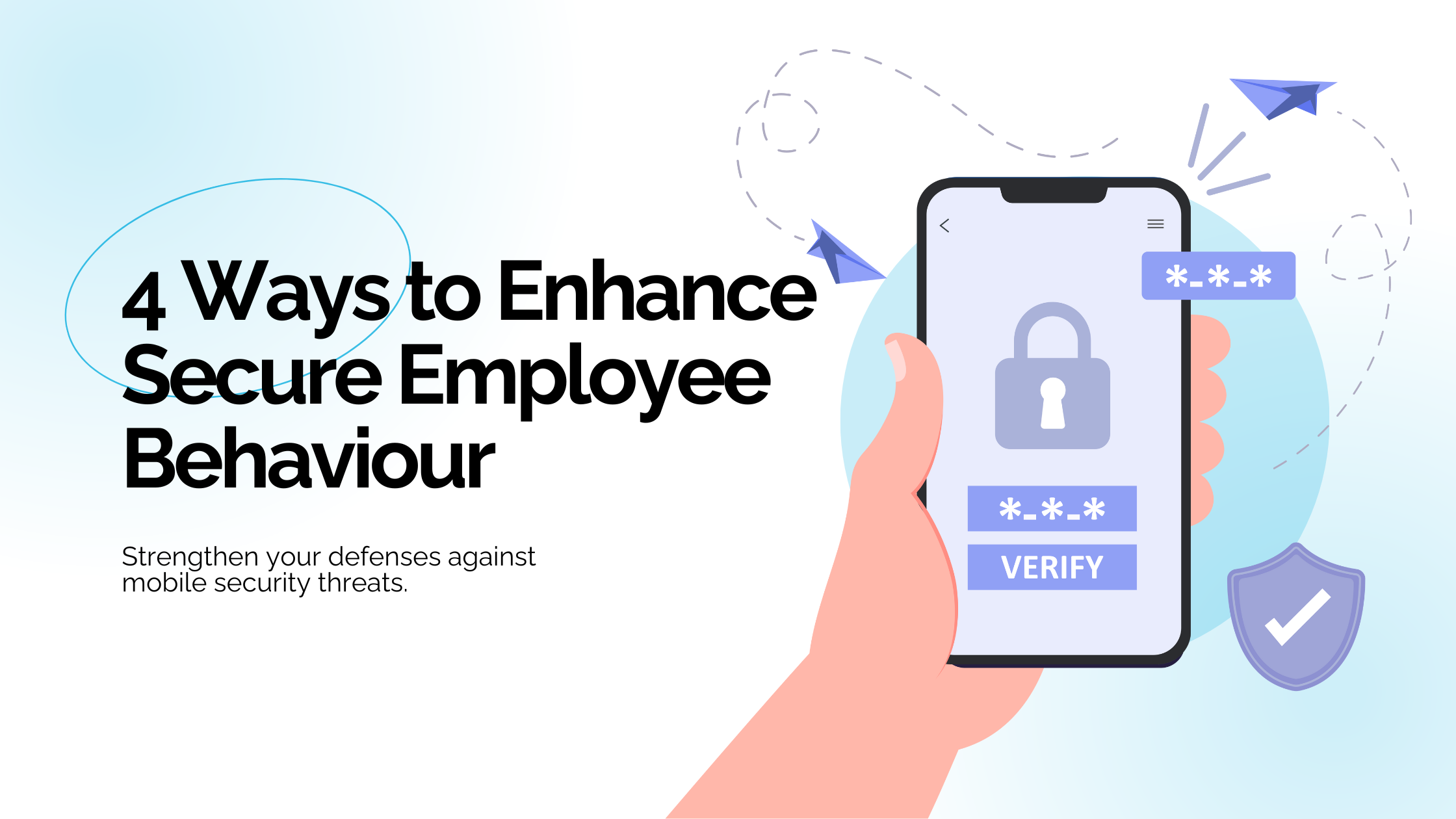23 January 2024

The security of an organisation's data and information is of paramount importance. Achieving robust cybersecurity isn't solely dependent on advanced technology or sophisticated software; it begins with the employees' behaviour. Secure employee behaviour is the frontline defence against cyber threats.
Let's explore four strategies to cultivate a culture of security within your organisation.
1. Redesigned Security Programs
In the next decade, cybersecurity will shift its focus from mere compliance to measurable behaviour change. VoicePlus solutions are at the forefront of this transformation, offering the means to implement a Security Behaviour and Culture Program (SBCP). By adopting an SBCP, organisations can move beyond baseline compliance and embrace a culture of security. This shift involves three key objectives, each with its own set of capabilities and metrics:
Achieve baseline compliance:- Capabilities: Implement training modules and integrate a Learning Management System (LMS).
- Metrics: Monitor and improve training completion rates.
- Capabilities: Conduct mock phishing simulations and introduce human risk scoring.
- Metrics: Assess and enhance click rates.
- Capabilities: Leverage automation and data integration.
- Metrics: Identify and mitigate actual user-originated attacks.
These strategies play a pivotal role in proactively shaping a security-aware organisational culture, safeguarding against evolving cyber threats.
2. Human-Centric Security Controls
Cybersecurity-induced friction can hinder employee productivity and lead to insecure practices. According to a recent Gartner survey, many employees struggle with complex cybersecurity controls and policies. To address this, security leaders can adopt a human-centric approach to control design, reducing friction and enhancing security:
- Identify friction sources through friction-sensing mechanisms.
- Review and retire ineffective controls.
- Encourage cybersecurity teams to prioritise user experience (UX) and consider employee impact.
- Implement a user-friendly "guided bypass" for cybersecurity controls.
By making controls more user-friendly, organisations can enhance security without compromising productivity.
3. Tailored Learning Experiences
Effective cybersecurity training goes beyond theory. CISOs should create role-specific learning modules to engage employees and improve decision-making based on real-world scenarios. Here's how to do it:
- Craft questions that reflect employees' likely experiences in their roles.
- Present scenarios with multiple "right" answers, mirroring real-world complexity.
- Use a "choose your own path" design to illustrate the consequences of decisions, allowing employees to revise choices if necessary.
This approach ensures that training is relevant, engaging, and equips employees to make informed security decisions.
4. Leveraging the VoicePlus Atrium Platform
The VoicePlus Atrium Platform fosters a culture of security within organisations. It offers a structured approach to enhance secure employee behaviour. Centralising mobile and computer management services provides real-time insights into employee activities. By leveraging the Atrium platform, organisations can gain executive support, envision program success, measure achievements, and ensure ongoing success in embedding security consciousness. It's a tailored solution designed to align with your organisation's unique needs.
For more details about VoicePlus Atrium Integrated Managed Mobility and Endpoint Services platform, please visit us here.
Staying Ahead of the Curve
Safeguarding sensitive data is non-negotiable, and the power to fortify your organisation's security lies in the hands of your employees. By implementing these measures, you're bolstering your defences against cyber threats and nurturing a culture of security that's ingrained in your organisation's DNA. Remember, cybersecurity is a journey, not a destination. So keep enhancing – you'll be glad you did.
To learn more about how VoicePlus can help you enhance secure employee behaviour and strengthen your organisation's security posture, contact us today.
Latest from the Blog
3 Strategies to Reduce Telecom Cost




